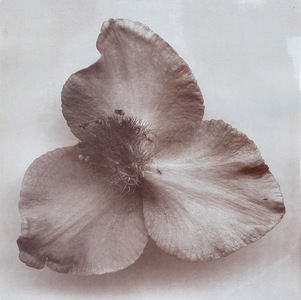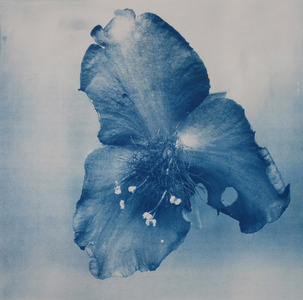Clancy, Tony 
![tradesc 1.jpg [thumbnail of tradesc 1.jpg]](https://eprints.glos.ac.uk/5398/1.hassmallThumbnailVersion/tradesc%201.jpg)  Preview |
Image
tradesc 1.jpg - Draft Version Available under License All Rights Reserved. Download (187kB) | Preview |
![tradsc 2.jpg [thumbnail of tradsc 2.jpg]](https://eprints.glos.ac.uk/5398/2.hassmallThumbnailVersion/tradsc%202.jpg)  Preview |
Image
tradsc 2.jpg - Draft Version Available under License All Rights Reserved. Download (903kB) | Preview |
![tradsc 3.jpg [thumbnail of tradsc 3.jpg]](https://eprints.glos.ac.uk/5398/3.hassmallThumbnailVersion/tradsc%203.jpg)  Preview |
Image
tradsc 3.jpg - Draft Version Available under License All Rights Reserved. Download (942kB) | Preview |
![tradsc 4.jpg [thumbnail of tradsc 4.jpg]](https://eprints.glos.ac.uk/5398/4.hassmallThumbnailVersion/tradsc%204.jpg)  Preview |
Image
tradsc 4.jpg - Draft Version Available under License All Rights Reserved. Download (200kB) | Preview |
![images from 'Garden Underground' exhibiition [thumbnail of images from 'Garden Underground' exhibiition]](https://eprints.glos.ac.uk/5398/5.hassmallThumbnailVersion/tradsc%205.jpg)  Preview |
Image (images from 'Garden Underground' exhibiition)
tradsc 5.jpg - Draft Version Available under License All Rights Reserved. Download (189kB) | Preview |
Abstract
The idea of series of images showing things that are similar, but slightly different, was perhaps first tried out by the scientist and illustrator Robert Hook in the early 17th century. He worked at a time when the first microscopes began to be developed. The ones he used were lower powered that the devices that Antonijn Leuweenhoek used in Delft to see bacteria and other life forms that had previously been invisible, but Hoek was nonetheless able to see and record nature in intense detail. He looked at a few seeds of the thyme plant and observed that although broadly similar, each seed also showed differences. As with humans and most other complex life forms, there is a general pattern for how a particular species looks, but also differences that mark them out as individuals. This was later explored through discoveries in genetics and Darwin’s ideas on evolution – the differences are not only external but built into the fundamental make up of each animal and plant. Hook’s drawings were systematic and highly observed, and an important contribution to how science recorded the world in order build an understanding of it. In Holland, painters and illustrators were also using new skills in high realism to record the diversity of life. Joris Hoefnagel and Jan van Kessel were among these and, though not as systematic in their science as Hook, brought the natural world to life in a way not surpassed until the invention of photography about 200 years later. There are some very noteworthy examples of camera images that take forward Hook’s exploration of similarity and difference. In the 1890s and early 20th century, a gardener, Charles Jones, documented the varieties of fruit and vegetables that he had grown. Whilst he did not (as far as is known) train as a photographer, he intuitively placed items on a blank background. This focuses our attention on them as specimens, and takes away distractions and aesthetic enhancements. The beauty of these images lies within the object itself as rendered by the camera and print. Detail and tonality give his pictures a powerful impact, we enjoy them perhaps more than looking at real garden produce; they are commonplace, everyday items but we see them with a new attentiveness. The tradescanthia flowers in these prints are a typology. They are from the same plant but exhibit wide variations in form. They were produced by placing the flowers on a scanner and scanning them at high resolution. These were then printed using processes first developed in the 1840s, in the very earliest days of photography. The prints are made by hand coating chemicals on paper then exposing to ultra violet light. By the nature of these processes, each print is unique and minor blemishes and variations in the paper and chemistry show up on the final image. These differences reflect the variations that the flowers themselves show; they are not scientific, objective images, but nonetheless refer back to the early scientific illustrations that had a deep influence on our understanding of the natural world.
| Item Type: | Artefact |
|---|---|
| Uncontrolled Keywords: | The Garden Underground, Tony Clancy, gardens, tradescantia, typologies, garden photography |
| Subjects: | N Fine Arts > N Visual arts (General) For photography, see TR |
| Divisions: | Schools and Research Institutes > School of Creative Arts |
| Research Priority Areas: | Culture, Continuity, and Transformation Creative Practice and Theory |
| Depositing User: | Tony Clancy |
| Date Deposited: | 19 Feb 2018 16:48 |
| Last Modified: | 31 Aug 2023 09:23 |
| URI: | https://eprints.glos.ac.uk/id/eprint/5398 |
University Staff: Request a correction | Repository Editors: Update this record

 Tools
Tools Tools
Tools